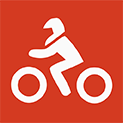Bob Dow » Motorcycle travel story
Motorcycle travel story by Bob Dow
Motoroads.com © Copyright 1998 –
2024. Licensed Tour Operator: 05211
This website uses cookies. If you agree, hit the "Close" button or continue browsing. Visit Privacy policy for more information.


